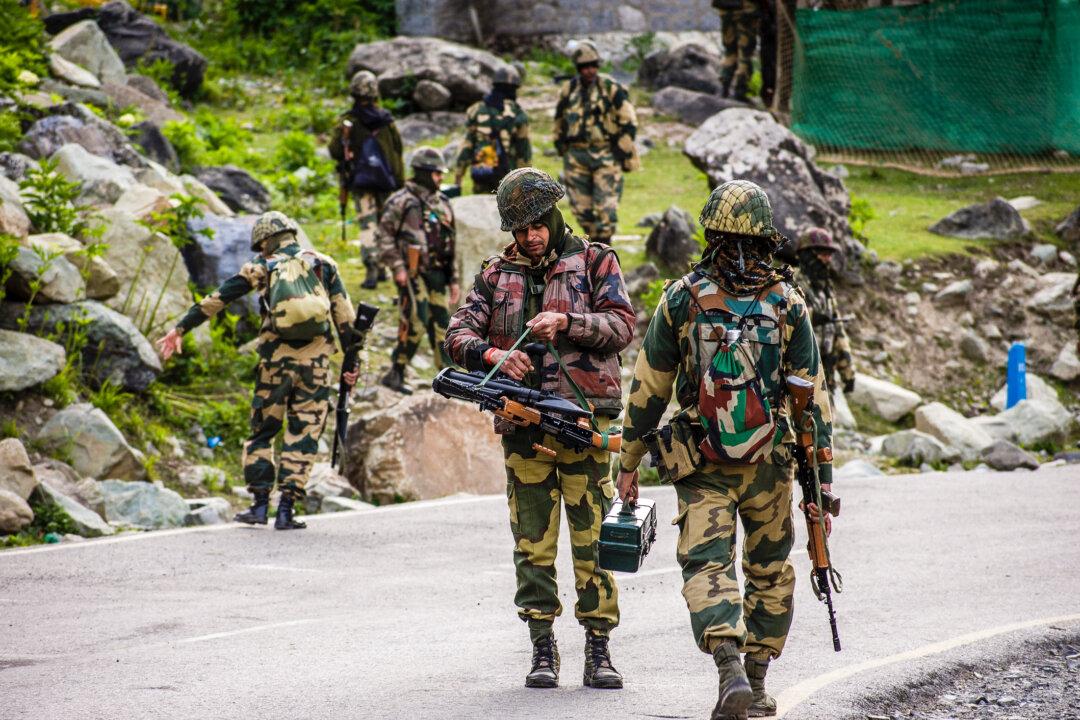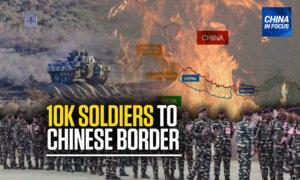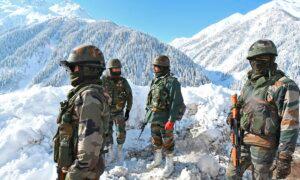NEW DELHI—India’s deployment of 10,000 soldiers on the border with China in the Himalayan states of Himachal Pradesh and Uttarakhand indicates that border relations between the two nuclear-armed giants are deteriorating and are unlikely to improve soon, strategic experts say.
“There’s absolutely no trust; the Indians cannot trust the Chinese,” Namrata Hasija, a research fellow with the New Delhi-based Centre for China Analysis and Strategy, told The Epoch Times.
“So we have to see this in the larger perspective, that the relationship has not improved. I don’t see any signs of it improving in the near future.”
The 10,000 soldiers are being redeployed from India’s western border with Pakistan. Their placement along 331 miles of the stretch of otherwise dormant but disputed border wasn’t noted by an Indian government spokesperson but by Bloomberg News, which, on March 7, cited an anonymous Indian government source.
Meanwhile, the Chinese regime expressed displeasure while confirming the development, calling the move “counterproductive.”
Retired Indian Maj. Gen. G.G. Dwivedi, a former assistant chief of India’s integrated defense staff and a former defense attaché in China, told The Epoch Times that the disputed border between India and China—called the “Line of Actual Control”—is likely to be “intensely contested” in the future.
That means that both sides will be involved in what he termed “tactical positioning” and “strategic posturing,” he predicted.
By “tactical positioning,” he indicated that India will position itself wherever necessary to effectively counter any offensive action on China’s part, while India and China will regularly checkmate each other on the border. “Strategic posturing” means India will invest in the long-term management of its border affairs with China.
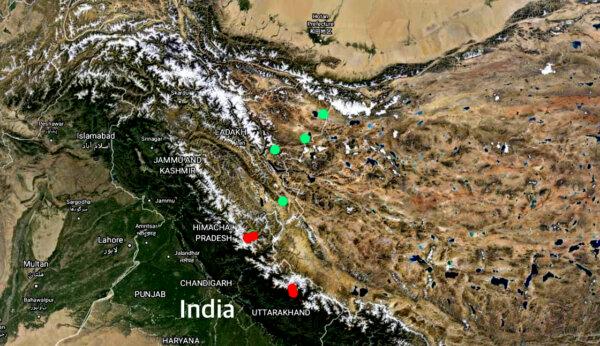
A Wider Perspective
The Indian veteran said he believes that the issue isn’t a one-time incident involving the deployment of 10,000 Indian soldiers, but concerns India’s wider developing context vis-a-vis China. This context, he said, has a three-tiered significance: tactical, strategic, and global.Strategically, he said India’s reset began a few years ago, in response to the People’s Liberation Army’s (PLA) massive incursions in Eastern Ladakh in early May 2020, which violated five key bilateral agreements on the maintenance of peace and tranquility on the borders.
The bloody Galwan Valley incident in June 2020, in which Chinese and Indian troops engaged in brutal hand-to-hand combat, further aggravated the situation.
“On Xi Jinping taking over in 2012, China transitioned from assertive to aggressive behavior,” he said. Galwan wasn’t the only alarming incident for India, he said, citing earlier, limited transgressions by China in the disputed areas of Depsang, Demchok, and Doklam.
Depsang is in Central Ladakh, while Demchok is at the southern end of the India–China disputed boundary in Ladakh. Doklam, or Donglang in Chinese, is at the tri-junction between India, Bhutan, and China. It was the site of a military standoff between PLA and Indian troops for two months in 2017.
Meanwhile, he said, “China kept on massively increasing its military built-up in Tibet and also kept revamping the border management through the new Xiaokang border villages.”
All were strategic moves by China. India’s strategic coping with these new challenges involves wider border management. For instance, in response to China’s Xiaokang villages, India is building its own “vibrant villages program.”
“A rebalancing is happening,” the retired general said.
The Indian government introduced the “vibrant village” program in 2022, announcing that it would develop 663 villages along the disputed border in the first phase, including 17 villages in Ladakh, Himachal Pradesh, Uttarakhand, Sikkim, and Arunachal Pradesh as a pilot.
From the perspective of tactical positioning, the deployment, Mr. Dwivedi says, is happening under a newly established combat command in the central sector. Militarily, India’s Himalayan boundary with the PLA has three sectors: Ladakh is in the western sector, the states of Himachal Pradesh and Uttarakhand are in the central sector, and the eastern sector runs along Sikkim to Arunachal Pradesh.
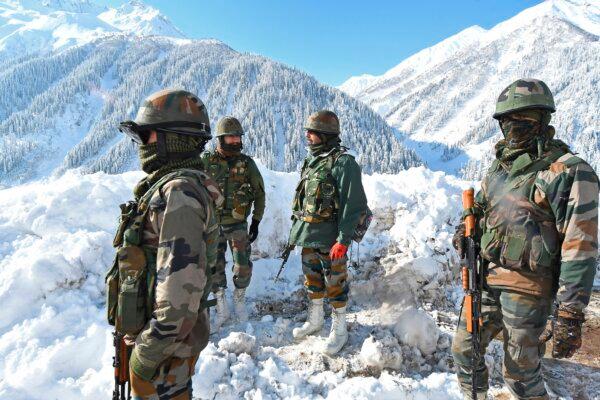
Global Perspective
With China’s emergence as a global power and India’s burgeoning economy, India–China relations have a broader geopolitical impact. India’s strategic posturing against Beijing isn’t limited to its front line with China; it also involves global posturing such as India’s participation in the QUAD alliance with the United States, Japan, and Australia.India’s growing strategy against China involves its wider geopolitical interests and includes a profound change in attitude, observers say.
“India was used to [being] cautious, but now we have a different approach; we are going to be more active, proactive. We are not going to ignore the borders that we share with Tibet, in Uttrakhand, and in Himachal,” Ms. Hasija said.
Mr. Dwivedi said that India’s fresh deployment along the border in Himachal Pradesh and Uttarakhand is viewed as New Delhi’s response to China, in line with its right to defend itself against Chinese expansionist moves.
He thinks that has created a “favorable” global perspective toward India, as it has refused to passively submit to Chinese tactics.
